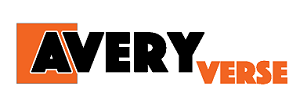How GRC Audit Tools Increase Transparency and Accountability in Organizations
Modern businesses operate in a complex landscape where compliance, risk management, and governance are pivotal to their success. Organizations need robust systems to ensure their operations remain transparent and accountable to stakeholders. Implementing GRC audit software plays a crucial role in achieving this. These tools streamline processes, help organizations identify risks, and maintain alignment with regulatory requirements.
This article explores how GRC audit tools enhance transparency and accountability, the key features to look for, and why professional services are essential for effective implementation.
Enhancing Transparency Through Automation
Transparency in operations is not just about compliance; it’s about building trust with all stakeholders involved. GRC audit tools help foster this culture of trust by automating routine processes and generating clear, auditable trails.
Automated systems provide an unbiased view of organizational performance. They minimize the chance of human errors in reporting, ensuring accuracy in every audit. GRC software centralizes data, so every department has access to a standardized version of the truth. This real-time data accessibility ensures that any discrepancies are identified and resolved promptly.
The Role of Centralized Reporting
One of the key features of GRC audit tools is centralized reporting. These reports provide top-level management with a bird’s-eye view of their organization’s compliance and risk status. Operational silos that often hinder collaboration are broken down, fostering open communication. This visibility not only helps in better decision-making but also ensures external stakeholders, such as investors or regulatory bodies, have a clear understanding of the organization’s compliance stance.
Driving Accountability Across Departments
While transparency ensures stakeholders see the organization’s processes clearly, accountability is about ownership and responsibility. GRC audit tools ensure every department knows its role in maintaining compliance and addressing risks.
Assigning Roles and Responsibilities
Built-in role assignments in GRC tools create a clear structure where every individual and team understands their part in the compliance and governance framework. Regular updates from the system inform stakeholders of progress or deviations, holding teams accountable for prompt corrective action.
For example, when a compliance violation is identified, the GRC tool alerts the relevant department. The system tracks corrective actions and records the steps taken, ensuring accountability at every stage.
Leveraging Technology for Better Outcomes
The technology behind GRC audit tools provides features that go beyond compliance. They enable organizations to forecast potential risks, stay ahead of regulatory changes, and effectively manage their resources.
When choosing modern tools for your business, understanding their capabilities is critical. It’s important to focus on tools that align with your organizational objectives. Understanding the features to look for in modern GRC audit software is essential for making an informed decision that aligns with your organization’s goals.
Real-Time Risk Monitoring
Real-time monitoring capabilities allow businesses to detect vulnerabilities before they escalate. Advanced GRC tools integrate with other operational systems in the organization, creating a continuous feedback loop. This proactive approach not only mitigates risks but ensures the organization stays resilient, even in unpredictable environments.
Why Professional Services Matter
Effectively implementing and optimizing GRC audit software requires expertise. Professional services ensure that the tools are tailored to fit your organizational framework, leaving no room for inefficiency. From initial setup to regular maintenance, these services take the burden off internal teams and provide confidence in the system’s performance.
Skilled professionals bring industry knowledge and insights that are invaluable for leveraging these tools. They help businesses align their processes with current and upcoming regulatory changes, ensuring compliance across multiple jurisdictions.
Also Read: The Importance of Preparing and the Significance of Compliance
Conclusion
GRC audit tools have transformed the way organizations handle governance, risk, and compliance. By fostering transparency through centralized reporting and enhancing accountability with role-based structures, these tools have become indispensable for businesses aiming to maintain trust among stakeholders. Coupled with professional services, the implementation of such software not only ensures compliance but also prepares organizations for future challenges. Choosing the right solutions and leveraging expertise to implement them can propel companies toward long-term success.


